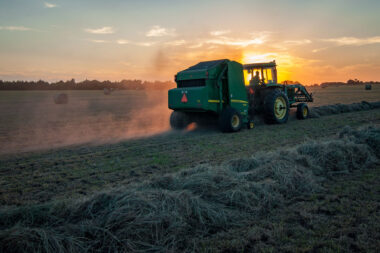As the global community grapples with the urgent need to address climate change, innovative solutions are emerging across various sectors to reduce greenhouse gas emissions. In the waste management industry, where incineration has been a common practice for decades, a new wave of technologies is making significant strides in mitigating its environmental impact. One key advancement is the integration of carbon capture technologies into waste incineration facilities, offering a promising avenue to minimize the release of carbon dioxide (CO2) and contribute to a more sustainable waste-to-energy process.
The Carbon Dilemma in Waste Incineration:
Waste incineration has long been employed as a method for managing municipal solid waste, providing a source of energy while reducing the volume of waste sent to landfills. However, the combustion of organic materials in the presence of oxygen results in the emission of carbon dioxide, a potent greenhouse gas. This has raised concerns about the net environmental benefits of waste-to-energy facilities, particularly in the context of climate change.
In traditional waste incineration, the carbon footprint of the process is a critical consideration. The carbon dioxide released during combustion contributes to the overall carbon emissions inventory, offsetting the advantages of waste diversion from landfills. Recognizing this challenge, researchers and engineers have been actively exploring technologies that can capture and store carbon emissions from waste incineration, effectively reducing its environmental impact.
Carbon Capture Technologies: A Primer:
Carbon capture technologies, often referred to as Carbon Capture and Storage (CCS) or Carbon Capture, Utilization, and Storage (CCUS), involve the capture of CO2 emissions at their source, preventing their release into the atmosphere. In the context of waste incineration, these technologies intercept the carbon dioxide produced during the combustion of waste materials before it reaches the air. Once captured, the CO2 can be transported and stored underground or utilized in various industrial processes.
There are several types of carbon capture technologies, each with its unique mechanisms:
Post-Combustion Capture:
This method involves capturing CO2 from the flue gas after the combustion process. The flue gas, which contains CO2 along with other pollutants, is treated to isolate the carbon dioxide before it is released into the atmosphere.
Pre-Combustion Capture:
Pre-combustion capture involves processing the waste materials before combustion to separate CO2 from the flue gas produced during combustion. This approach is often associated with gasification technologies.
Oxy-Fuel Combustion:
In oxy-fuel combustion, waste materials are burned in an oxygen-rich environment, resulting in a flue gas primarily composed of CO2 and water vapor. The CO2 can then be easily captured from this concentrated stream.
Integration of Carbon Capture in Waste Incineration:
The integration of carbon capture technologies in waste incineration facilities represents a pivotal shift toward more sustainable waste-to-energy practices. While these technologies have been extensively applied in other industries, adapting them to the specific conditions of waste incineration poses unique challenges.
Post-Combustion Capture in Waste Incineration:
Post-combustion capture is the most common approach when retrofitting existing waste incineration plants. Flue gas, generated during the combustion of waste materials, is subjected to a separation process to isolate CO2. This process typically involves the use of solvents or sorbents that selectively capture and absorb CO2. Once captured, the CO2 is then compressed for transportation or further processing.
Implementing post-combustion capture in waste incineration facilities requires careful consideration of the composition of flue gas, which may contain contaminants and particulate matter. Efficient and robust separation technologies capable of handling these challenges are essential for successful implementation.
Pre-Combustion Capture and Gasification:
Pre-combustion capture is often associated with advanced gasification technologies where waste materials are converted into a synthetic gas (syngas) before combustion. By capturing CO2 from the syngas, this method allows for a cleaner and more concentrated stream of carbon dioxide.
Gasification technologies offer the advantage of producing a syngas with a higher hydrogen content, which can be utilized for various purposes, including electricity generation and the production of biofuels. The captured CO2, once separated, can be stored or used in industrial processes.
Oxy-Fuel Combustion for Carbon Capture:
Oxy-fuel combustion involves burning waste materials in an environment enriched with oxygen, resulting in a flue gas stream primarily composed of CO2. This concentrated CO2 stream simplifies the capture process, as it eliminates the need for extensive separation from other gases.
While oxy-fuel combustion has shown promise in reducing the cost and energy requirements for carbon capture, its application in waste incineration requires careful consideration of the specific waste composition and combustion characteristics.
Implementing carbon capture in waste incineration involves a combination of hardware and software components. The specific technologies and tools can vary based on the chosen carbon capture method, whether post-combustion, pre-combustion, or oxy-fuel combustion. Here’s an overview of the general software and hardware required:
Hardware Components:
Flue Gas Treatment Systems:
Scrubbers: For post-combustion capture, scrubbers are used to remove pollutants and capture CO2 from flue gas.
Gasification Reactors: In pre-combustion capture, gasification reactors are employed to convert waste into syngas before combustion.
Oxygen Plants: Required for oxy-fuel combustion, these plants provide the oxygen-rich environment for burning waste.
CO2 Capture Units:
Absorption Columns: Utilized in post-combustion capture, these columns facilitate the absorption of CO2 using solvents or sorbents.
Separation Systems: In pre-combustion capture, separation systems are used to isolate CO2 from the syngas.
CO2 Compression Units: Compressors are necessary to increase the pressure of captured CO2 for transportation and storage.
Transportation Infrastructure:
CO2 Transport Tanks/Pipelines: Depending on the storage location, infrastructure for transporting captured CO2 is essential.
Storage Facilities:
Geological Storage: Underground storage sites, such as depleted oil and gas fields or saline aquifers, may be used for long-term storage of captured CO2.
Industrial Utilization: Facilities for using captured CO2 in industrial processes, such as the production of chemicals or enhanced oil recovery.
Monitoring and Control Systems:
Sensors: Distributed throughout the system to monitor parameters such as CO2 concentration, temperature, and pressure.
Control Systems: Automated systems for regulating various processes to optimize efficiency.
Energy Supply Systems:
Power Generators: To provide the energy required for various processes, especially in oxy-fuel combustion.
Heat Exchangers: Used for recovering and utilizing heat generated during the carbon capture process.
Software and Control Systems:
Process Control Software:
Distributed Control Systems (DCS): Essential for controlling and monitoring the entire carbon capture process, including waste incineration and CO2 capture units.
Simulation and Modeling Software:
Process Simulation Tools: Software like Aspen Plus or UniSim Design aids in simulating the behavior of the entire system, optimizing process parameters.
Computational Fluid Dynamics (CFD): Used to model and analyze the fluid flow and combustion processes within incinerators.
Data Analytics and Monitoring Software:
SCADA (Supervisory Control and Data Acquisition) Systems: Provide real-time monitoring and control capabilities.
Data Analytics Platforms: Analyze data from sensors to optimize performance and identify potential issues.
Control Algorithms:
Advanced Process Control (APC): Algorithms designed to optimize the performance of the carbon capture system by adjusting parameters in real time.
Geospatial Information Systems (GIS):
GIS Software: Useful for analyzing and selecting suitable geological storage sites for long-term CO2 storage.
Communication Protocols:
Communication Platforms: Facilitate data exchange between different components and ensure seamless coordination.
Safety Systems:
Safety Instrumented Systems (SIS): Ensure the safe operation of the carbon capture facility by implementing safety controls in case of abnormal conditions.
Carbon Accounting Software:
Software for Emission Tracking: To monitor and report the amount of CO2 captured, transported, and stored.
Human-Machine Interface (HMI):
HMI Software: Provides operators with a graphical interface to monitor and control the carbon capture system.
Asset Management Systems:
Maintenance and Asset Management Software: Ensures the proper maintenance and functioning of all hardware components.
Benefits of Carbon Capture in Waste Incineration:
Emission Reduction: The primary benefit of incorporating carbon capture in waste incineration is the substantial reduction in greenhouse gas emissions. By preventing CO2 from entering the atmosphere, waste-to-energy facilities can contribute to global efforts to combat climate change.
Sustainable Energy Production: Waste incineration, coupled with carbon capture, enhances the sustainability of waste-to-energy processes. The captured CO2 can be stored or repurposed, allowing waste-to-energy facilities to operate with a reduced environmental footprint.
Carbon Neutrality: In some scenarios, the utilization of captured CO2 in industrial processes or for enhanced oil recovery can result in a carbon-neutral or even carbon-negative outcome. This is particularly relevant when the stored CO2 is utilized rather than being permanently sequestered.
Technological Innovation: The integration of carbon capture in waste incineration drives technological innovation in the waste management sector. This not only improves the environmental performance of waste-to-energy facilities but also positions them as contributors to a more sustainable energy landscape.
Challenges and Considerations:
While carbon capture in waste incineration holds immense promise, several challenges and considerations must be addressed:
Cost Considerations: The implementation of carbon capture technologies involves significant upfront costs. Assessing the economic feasibility and evaluating potential incentives or funding mechanisms are essential steps in the decision-making process.
Energy Requirements: Some carbon capture methods may impose additional energy requirements on the waste-to-energy facility. Balancing energy efficiency with emission reduction goals is crucial for the overall sustainability of the system.
Waste Composition Variation: The composition of municipal solid waste can vary widely, posing challenges for carbon capture technologies that must adapt to different waste streams. Flexibility in the design and operation of carbon capture systems is necessary to accommodate this variability.
Storage and Utilization Options: Determining the most suitable method for storing or utilizing the captured CO2 is a critical consideration. Factors such as geological storage feasibility, transportation logistics, and potential industrial uses play a role in decision-making.
Regulatory Framework: Establishing a supportive regulatory framework that encourages the adoption of carbon capture technologies in waste incineration is crucial. Clear guidelines, emission standards, and incentives can incentivize the industry to invest in sustainable practices.
Case Studies:
Several waste-to-energy facilities around the world have implemented carbon capture technologies, showcasing the feasibility and benefits of these solutions:
Oslo Waste-to-Energy Agency, Norway:
The Klemetsrud waste-to-energy plant in Oslo incorporates carbon capture technology to capture CO2 emissions. The captured CO2 is then transported and utilized in the food and beverage industry.
Amager Bakke, Denmark:
The waste-to-energy facility in Copenhagen, also known as Copenhill or Amager Bakke, utilizes carbon capture to reduce emissions. The captured CO2 is transported and utilized in the nearby greenhouses for enhancing plant growth.
Future Prospects:
The integration of carbon capture technologies in waste incineration is poised to play a pivotal role in the transition to more sustainable waste-to-energy practices. As technological advancements continue and regulatory support grows, waste-to-energy facilities worldwide may increasingly adopt carbon capture solutions.
Future prospects include:
Technological Advancements: Continued research and development will likely lead to advancements in carbon capture technologies tailored specifically for waste incineration. This may involve the development of more efficient sorbents, solvents, and separation methods.
Economic Viability: As technology matures and implementation becomes more widespread, the cost of carbon capture in waste incineration is expected to decrease, making it a more economically viable option for waste management facilities.
Global Adoption: Growing awareness of the importance of reducing carbon emissions is likely to drive global adoption of carbon capture in waste incineration. International collaborations and knowledge-sharing can further accelerate this trend.
Policy Support: Robust policy frameworks and incentives, such as carbon pricing mechanisms or tax credits, can encourage waste-to-energy facilities to invest in carbon capture technologies. Clear regulatory guidance is essential to create a supportive environment for these innovations.
In the quest for sustainable waste management practices, the integration of carbon capture technologies in waste incineration stands as a beacon of progress. By addressing the carbon emissions associated with waste-to-energy processes, these technologies contribute to the broader goal of mitigating climate change.
The journey toward widespread adoption of carbon capture in waste incineration involves overcoming challenges related to cost, energy efficiency, and waste stream variability. However, with continuous innovation, supportive policies, and global collaboration, waste-to-energy facilities equipped with carbon capture technologies can play a vital role in creating a more sustainable and environmentally conscious approach to waste management. As we stand at the intersection of technological innovation and environmental responsibility, the integration of carbon capture in waste incineration holds promise for a greener and more sustainable future.



